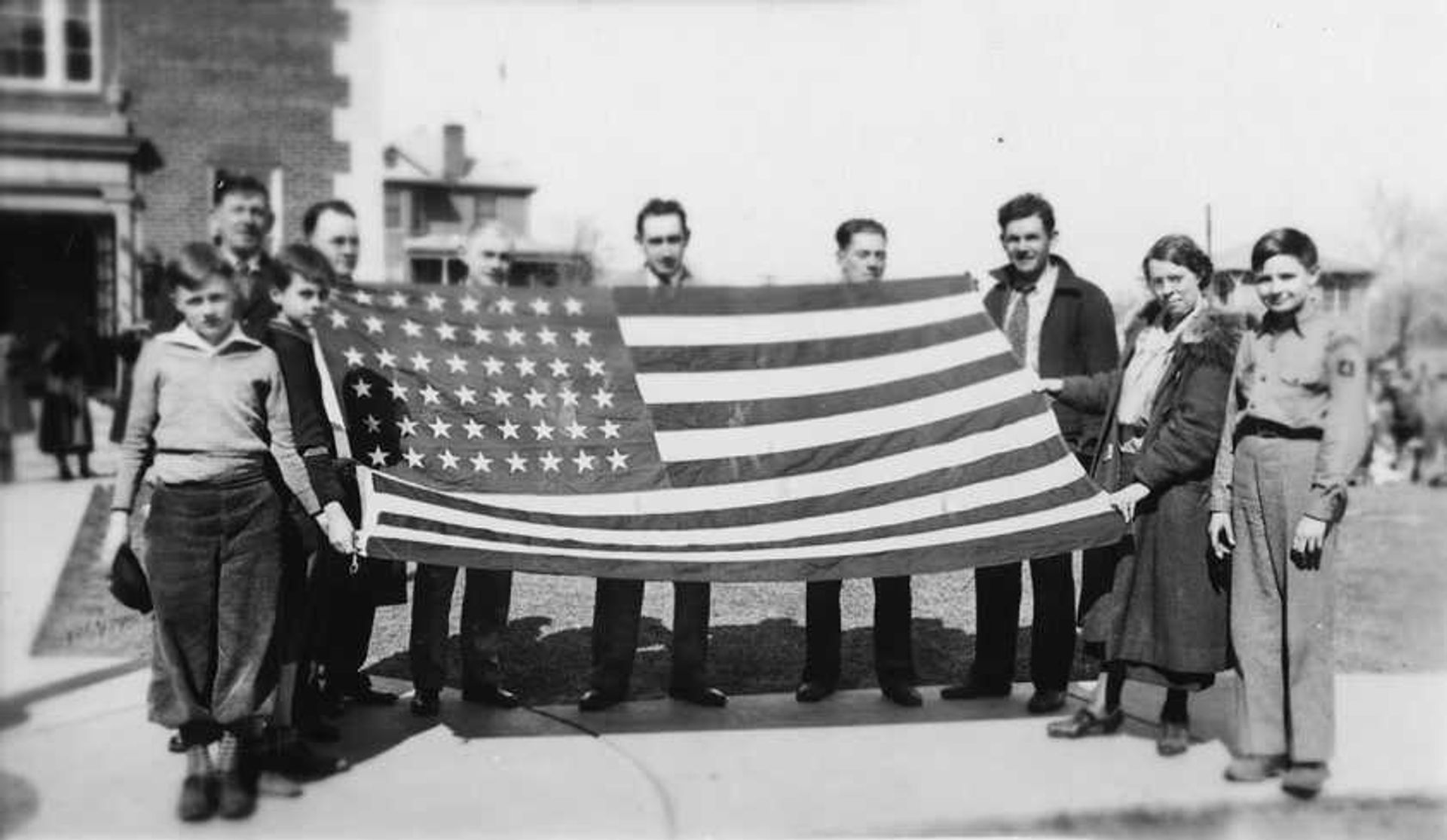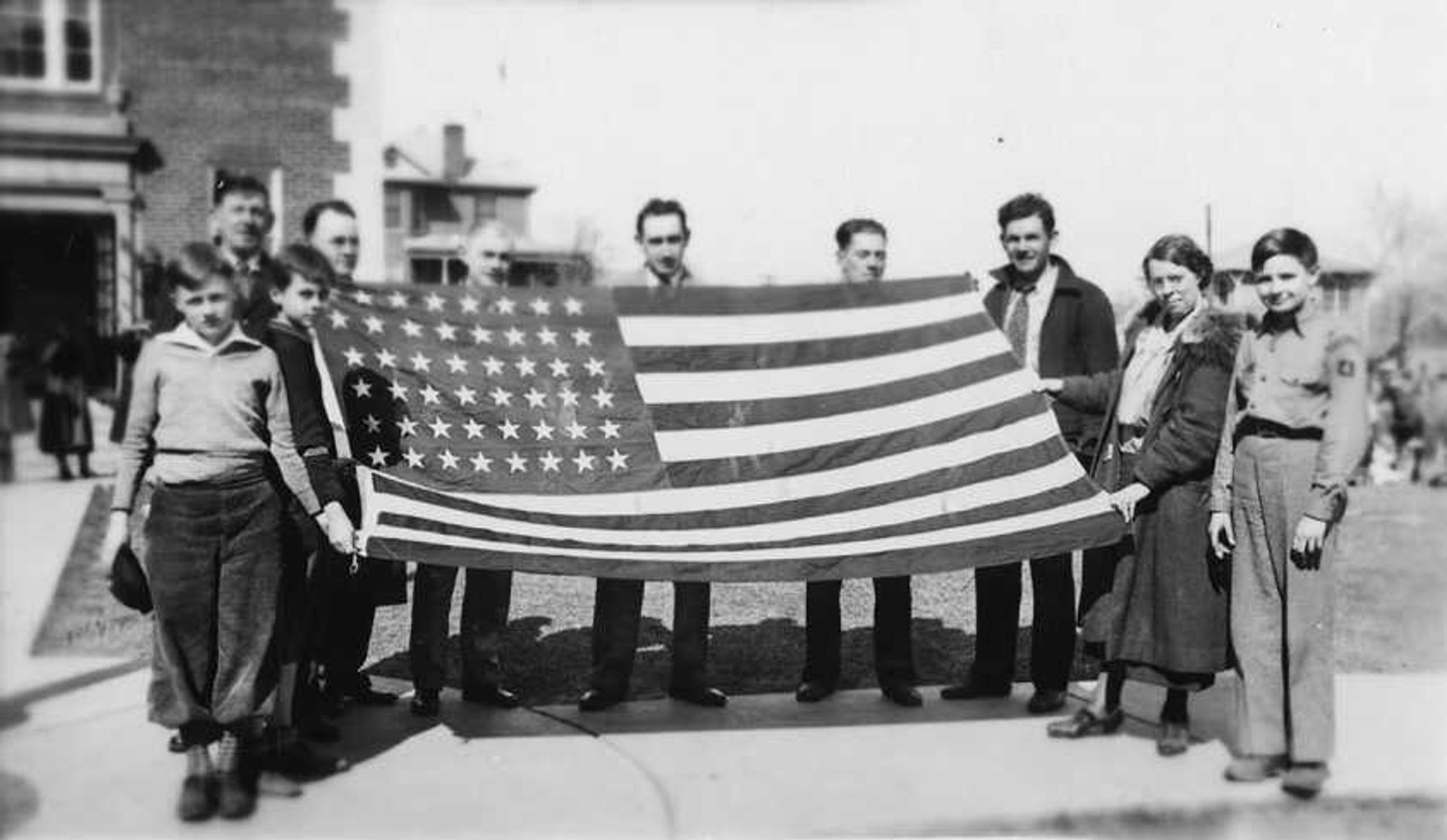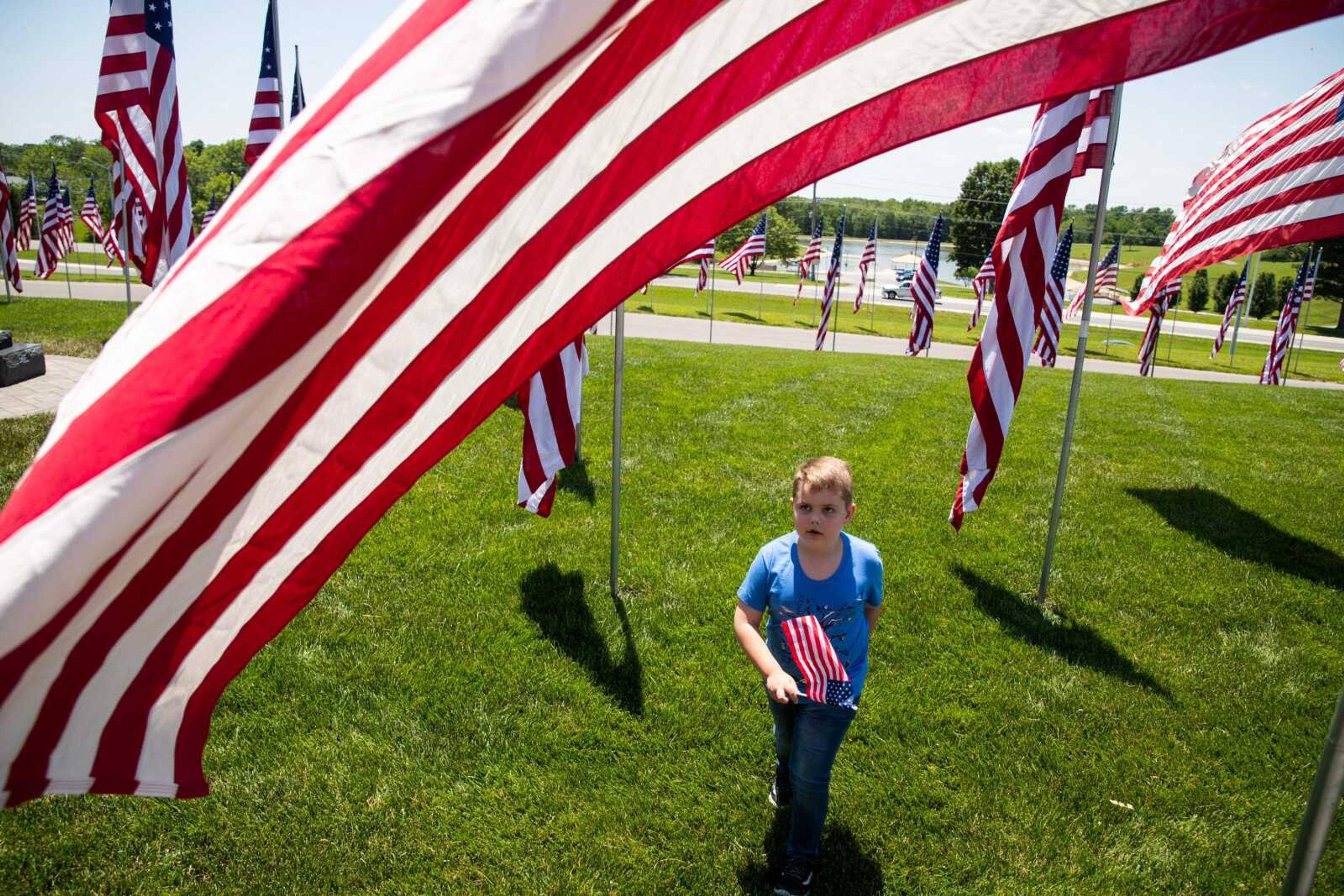What's Past is Prologue — Flag Day this week commemorates adoption of United State flag
Local historian Frank Nickell became emotional Friday, June 9, in discussing the Stars and Stripes. "If you came down Interstate 55 and came into Cape past Cape County Park North on Memorial Day weekend and saw all of those flags, I think that had to make you almost cry. I went out there and watched virtually every car slow down and gaze at those flags. ...
"What's Past is Prologue" series, an homage to William Shakespeare's "The Tempest", looks at events of the past that seem to reoccur later with remarkable similarities. Frank Nickell of the Kellerman Foundation for Historic Preservation, previously a longtime faculty member at Southeast Missouri State University, is primary historian for these articles, which are carried intermittently in the Southeast Missourian.
Local historian Frank Nickell became emotional Friday, June 9, in discussing the Stars and Stripes.
"If you came down Interstate 55 and came into Cape past Cape County Park North on Memorial Day weekend and saw all of those flags, I think that had to make you almost cry. I went out there and watched virtually every car slow down and gaze at those flags. I think the Avenue of Flags is one of the best things Cape Girardeau has done in the last 50 years," said Nickell, who taught on SEMO's history faculty for 43 years.
Flag Day — this year on Wednesday, June 14 — is not a federal holiday but its observance has been part of the American calendar since a resolution was approved June 14, 1777, by the Second Continental Congress.
The resolution states in part: "Resolved, That the flag of the thirteen United States be thirteen stripes, alternate red and white; that the union be thirteen stars, white in a blue field, representing a new constellation."


Changes
Nickell said a unique feature of the U.S. flag, unlike other national banners, is that its appearance has changed over the years as more states joined the Union.
"In the 1950s, a high school student in Ohio named Robert G. Heft took his mother's sewing machine and cut the flag up and made a new one with a 50-star field. He was 17 years old. Heft's teacher at Lancaster, Ohio, High School had challenged one of his classes to give a new design for the U.S. flag. Heft's attempt did not impress the teacher, who gave the boy's project a B-minus grade, according to reporting at the time. Heft sent his flag to Buckeye State congressman Walter Moeller, and Moeller gave it to then-President Dwight D. Eisenhower. Ike agreed the boy's rendering was suitable. Heft's design was adopted as the new U.S. flag, the one we have today, on July 4, 1960. I remember when that happened. It was an amazing development," Nickell recalled.
Flag and Pledge
It is a common sight today to see Americans stand, place a hand over their hearts, and face the U.S. flag while reciting the Pledge of Allegiance.
"We never did that when I was a kid. We just stood at attention for the pledge. This practice came about around 1968 during a tense time of antiwar protests, demonstrations and riots. Putting the hand over the heart while facing the flag was an extra visual statement about loyalty to the nation," Nickell remembered.
Remembrance
"We have 120 national cemeteries and 80 state or territorial cemeteries with flags draped on coffins at virtually every burial. The flag is our symbol of nationalism. President Ronald Reagan gave a national radio speech on Flag Day, which happened to fall that year on Father's Day. That day, Reagan combined several things important to Americans together: fatherhood, loyalty to the nation and loyalty to family," Nickell said.
Connect with the Southeast Missourian Newsroom:
For corrections to this story or other insights for the editor, click here. To submit a letter to the editor, click here. To learn about the Southeast Missourian’s AI Policy, click here.









